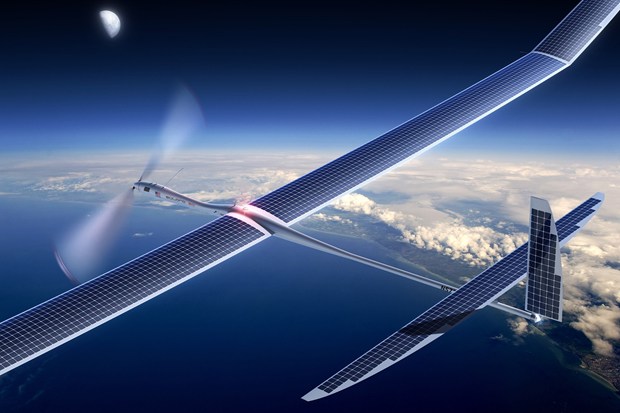Solar-powered drone going to fly for 5 years

As far as can be understood, Titan Aerospace has created the Solara 50, a solar drone that can hold out for five weeks in the air, not a week or a month. At the same time, the device will not just “hang” in the air, but will perform socially useful activities, including aerial photography. Such a survey will be conducted from a height of about 20 kilometers, so that someone may see in this and intentions to spy. In general, the project is quite open, so it is unlikely that all this will work with an exclusively “spy” purpose.
The device, in addition to its weight, can take into the flight also 31 kilograms of additional load, including scientific equipment. Despite the fact that the UAV is powered by solar panels, the device can fly at night, thanks to its roomy rechargeable batteries. It is also worth noting that the Solara 50 uses a large engine with one propeller.
')
Developers, by the way, explained why the height of 20 kilometers (plus minus 4-5 kilometers) was chosen as the working height. The fact is that at such a height, the photovoltaic cells of the UAV will always be open to the sun's rays, clouds, except for transparent nacreous and silvery (very rare, moreover) at such a height does not happen. Yes, and strong winds, common to the lower layers of the atmosphere, either. So the drone without any problems will be able to keep at a given height with the help of one of its screws.
As far as you can understand, the device is able to perform aerial photography to order, and such work will be very cheap: about five dollars per square kilometer, although usually a photograph of a square kilometer of the planet’s surface from a satellite costs several times more (from $ 35 or more).
Perhaps, Solara 50 can perform the work of the “network cell”, providing a region with a diameter of 60 kilometers (here you can recall the project from Google, where you plan to provide access to the network to remote regions, by means of balloons).
Now developers have a plan to launch a larger drone, the Solara 60. This UAV will be able to lift the payload by 115 kilograms, which is quite a lot.
At Solara 50 wingspan is also rather big, and is 50 meters. On the wings, on the upper surface, there are photocells, there are only about 3 thousand (power up to 7 kW). The drone is launched from a catapult, and lands directly on the "belly", covered with Kevlar.
Flight Solara 50 will take place next year.
Via wired
Source: https://habr.com/ru/post/190618/
All Articles